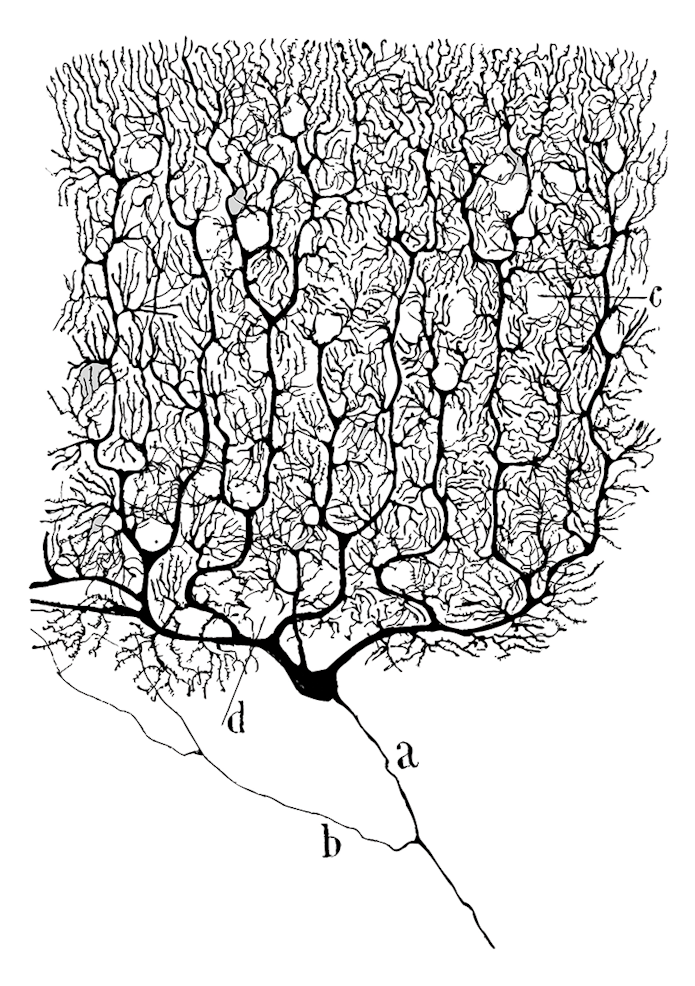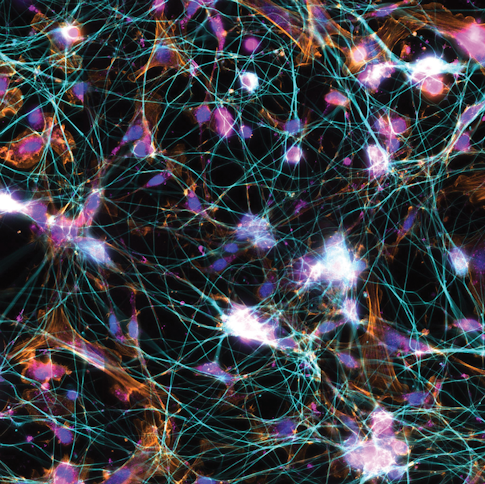
Beauty and the Brain
 Larry Abbott
Larry Abbott
Executive Committee, Simons Collaboration on the Global Brain; Theoretical Neuroscientist, Columbia University
The deeper we look into the brain and the more we understand about it, the more beautiful it appears. Neural circuits perform essential functions by exploiting, in extraordinarily “clever” ways, the remarkable properties of their components — and these components, right down to the molecular level, are as beautiful as the whole. I practice neuroscience for the magical moments when the clouds lift and depthless beauty is revealed.
Dmitri Chklovskii
Group Leader, Neuroscience, Center for Computational Biology, Flatiron Institute; Research Associate Professor, NYU Langone Health
What’s beautiful is that in some sense, our neurons are smarter than we are. The brain can perform certain tasks better than all of the artificial intelligence algorithms we have. And this is despite the fact that the algorithms we use are a result of our design, while the brain is a product of this very unpredictable, stochastic process called evolution. Moreover, something so powerful and so fit develops without a central authority and is instead based on local ‘self-
organizing’ rules.
Adrienne Fairhall
Executive Committee, Simons Collaboration on the Global Brain; Computational neuroscientist, University of Washington
Since high school, I have been drawn to the beauty and orderliness of physics: the decomposition of the real world, from quanta to galaxies, into mathematics. The messiness and complexity of biology seemed overwhelming. Three seminal experiences — a lecture by Nobel Prize winner Leon Cooper on the development of orientation columns; a wonderful discussion about place cells among biologists, physicists and computer scientists at the Weizmann Institute; and biophysicist Bill Bialek’s gift of a book, Spikes — left me exhilarated that there is underlying regularity in brain dynamics, that physical principles can be applied to tame what seem like impossible levels of detail. It is the most tantalizing and rich mathematical problem that exists.

Gerald Fischbach
Distinguished scientist, Simons Foundation
What I find beautiful about the brain are the elements within it — the nerve cells and glia — and how they communicate. There is physical beauty in their shape and how they generate signals, and a mysterious beauty in how signals produce our thoughts and emotions. The biggest mystery is still before us: How do electrical signals in billions of neurons coordinate their activity to produce coherent sensation, movement, emotions, thoughts, memory and creativity? We think we are on track to understand aspects of this question. It is what the Simons Collaboration on the Global Brain is trying to do. Positive outcomes at this level would open new unimagined aspects of brain beauty.
Catherine Lord
Scientific Advisory Board, Simons Foundation Autism Research Initiative; Psychologist, University of California, Los Angeles
The brain is beautiful because its developmental trajectory allows human beings to become the adaptive, creative, socially connected and complex beings we are. Human children acquire basic motor and adaptive functions far more slowly than other species. That relatively slower maturation of the brain allows us to build cognitive and social connections, through experience with caregivers and the wider world that shapes our development throughout our life spans. The brain is so complex that we are only just beginning to find recognizable patterns associated with marked individual differences in development and behavior — related to intellectual disability or autism spectrum disorder, for example. While this is frustrating for clinical scientists, it reflects the multiplicity of levels of function and adaptation and the wealth of possibilities the brain gives us.

William Newsome
Executive Committee, Simons Collaboration on the Global Brain; Neurobiologist, Stanford University School of Medicine
The brain is unfathomably complex, containing roughly 100 billion neurons that interact across 100 trillion systems and transmit information via 62,000 miles of wiring — enough to wrap around the Earth’s circumference more than twice. The emergence of our minds from the physical reality of our brains is beautiful, wondrous and perplexing. How complex mental life emerges from the molecular and cellular minutiae of the brain is deeply mysterious. Answers to these fundamental questions will strongly influence how we conceive of ourselves as sentient, thinking beings; how we anticipate our future as the boundary between biological and artificial intelligence blurs; and how we understand and treat psychiatric and neurological condition.
Louis Reichardt
Director, Simons Foundation Autism Research Initiative
I think it’s amazing that properties of cells that were developed in the Precambrian soup can be exploited to create such a complicated and well-functioning organ in the body. These pathways that were necessary to let single-cell organisms survive somehow created this amazingly complicated and beautifully functional part of the body.
David Tank
Director, Simons Collaboration on the Global Brain; Co-director, Princeton Neuroscience Institute
Traditionally, we viewed the structure of neurons, like the branching of a dendritic arbor (famously sketched by neuroscientist Santiago Ramón y Cajal), as illustrative of the beauty of the brain. But with new methods, such as connectomics and deep sequencing, we’re starting to see a level of complexity that is so staggering it’s hard to comprehend. It’s awe-inspiring how nature created this structure. How is thinking produced from this complexity? Given this staggering complexity, it’s particularly amazing that the brain builds itself. Not only is it the most complex thing in the known universe, it builds itself. I also find great beauty in the brain in action. With modern technology, we can see the brain at work: We can watch memories being formed and actions being taken. That’s a new kind of beauty that neuroscientists are only recently becoming aware of.
Michael Wigler
Investigator, Simons Foundation Autism Research Initiative; Molecular biologist, Cold Spring Harbor Laboratory
I do have a view that is not “what is beautiful about the brain” — which implies our brain at best or the brain at worst by being singular — but “what is beautiful about brains,” which is that many different neural architectures (invertebrate, avian and mammalian) have evolved intelligence and recognition of the other intelligences. By “beautiful” I mean “mysteriously wonderful.”
